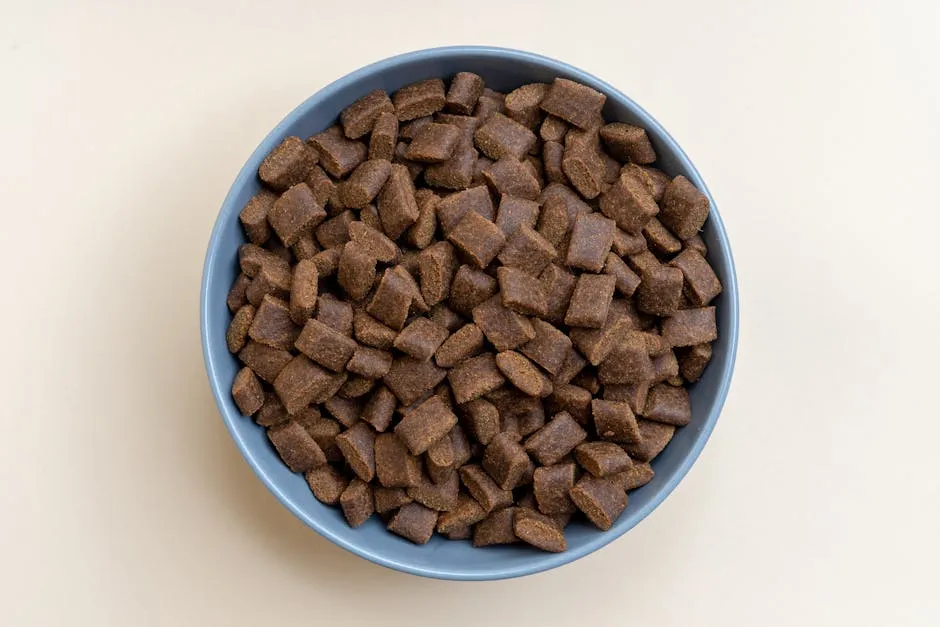Introduction
Rabbit is gaining traction as a protein source in dog food. Many pet owners are seeking alternative meats like rabbit for their furry friends. This article aims to discuss the benefits, considerations, and nutritional aspects of rabbit dog food.
Summary and Overview
Rabbit dog food offers unique attributes that set it apart. It’s a lean protein, low in fat and high in nutrients. This makes it ideal for dogs needing a lighter diet. Rabbit also contains essential amino acids, promoting muscle health and overall well-being.
For dogs with food allergies, rabbit serves as a novel protein. This means it’s less likely to trigger allergic reactions. Many pets thrive on diets that include uncommon proteins like rabbit. Sourcing rabbit for dog food can vary, with options like fresh meat or dehydrated meals. Understanding these ingredients is crucial for pet owners. Always check for quality sources to ensure your dog gets the best nutrition.
Speaking of quality, if you’re looking for a top-notch option, consider Orijen Dog Food – Rabbit Formula. This brand is celebrated for its high protein content and fresh ingredients, making it a favorite among discerning dog owners.

Understanding food allergies in dogs is essential for their health. Learn more about managing dog food allergies.
Nutritional Benefits of Rabbit Dog Food
High Digestibility and Bio-Appropriateness
Rabbit meat stands out as a highly digestible protein source. This means your dog can absorb its nutrients easily. Compared to chicken or beef, rabbit has a remarkable protein content that benefits active pups. Many dogs thrive on diets rich in protein, and rabbit provides that without excess fat.
The digestibility of rabbit is particularly advantageous for dogs with sensitive stomachs. Its gentle nature helps reduce gastrointestinal issues. Plus, the nutrient bio-availability in rabbit meat closely resembles what dogs would naturally consume. This makes it an excellent choice for those seeking a more natural diet for their furry companions.
For those who want to ensure their dog is getting the best nutrition possible, consider investing in a Dog Food Storage Container. Keeping food fresh and free from pests is essential for maintaining its nutritional value.

For dogs with sensitive stomachs, rabbit can be a great dietary option. Explore grain-free alternatives for sensitive stomachs.
When you switch to rabbit dog food, you’re giving your pet a protein that’s easy on the tummy. This can lead to healthier digestion and better overall health.
Novel Protein Source for Allergic Dogs
A “novel protein” is one that’s not commonly found in typical dog foods. For dogs with food allergies, this can be a game changer. Many pups show signs of allergies, like itching, digestive upset, or skin issues. By introducing rabbit, pet owners can often alleviate these symptoms.
The rarity of rabbit in dog food means it’s less likely your pet has been exposed to it. This can help prevent allergic reactions. Rotating protein sources is also beneficial for your dog’s health. Some dogs have thrived on rabbit diets, showcasing improvements in energy and coat condition.
For example, a Labrador with severe food allergies found relief after switching to rabbit. With time, his skin cleared up, and his energy levels soared. This highlights how a novel protein like rabbit can be a solution for many allergy-prone pets.

Sourcing of Rabbit for Dog Food
Farmed vs. Wild Rabbit
When considering rabbit for dog food, sourcing matters. Farmed rabbits are raised specifically for consumption. They often benefit from controlled environments and regulated farming practices. This can lead to consistent quality and more sustainable production methods. Ethical farming focuses on humane treatment, ensuring rabbits live in comfortable conditions.
In contrast, wild rabbits are harvested from natural habitats. While they can offer a different flavor profile, there are strict regulations in place to maintain wildlife populations. Wild rabbit meat may have a varied diet, which can affect its nutritional content. However, it might not always be as readily available as farmed options.
Both sources have their pros and cons. Farmed rabbits typically have a higher fat content, while wild rabbits may be leaner. Ultimately, considering ethical sourcing and sustainability is crucial for responsible pet ownership.

Rabbit Preparation Methods
Rabbit can be prepared in several ways for dog food, each with its unique benefits. The most common methods include fresh, dehydrated, and meal forms. Fresh rabbit meat is often the most nutritious, retaining essential vitamins and minerals. It’s a great option for those who prefer raw feeding.
Dehydrated rabbit is also popular. This method removes moisture while preserving nutrients, making it lightweight and shelf-stable. However, some nutrient loss can occur during processing. Rabbit meal, on the other hand, is made from rendered rabbit. This means it contains concentrated protein, but it may lack some freshness.
If you’re thinking about dehydrated options, check out Stella & Chewy’s Freeze-Dried Raw Dinner Patties – Rabbit. It’s a great way to provide quality nutrition without the hassle of preparation.

How to Choose the Right Rabbit Dog Food
Reading Labels and Ingredients
Choosing the right rabbit dog food starts with reading labels. Look for brands that prioritize quality ingredients. You want to see real rabbit meat listed first. Ingredients should be recognizable and not overly processed. Avoid foods with vague terms like “meat by-products.”
Understanding ingredient sourcing is crucial. High-quality brands often source rabbit from reputable farms. They ensure humane treatment and sustainable practices. This guarantees that your dog receives the best nutrition possible.
Be cautious of marketing claims. Phrases like “premium” or “natural” can be misleading. Always check for certifications or third-party testing to confirm quality. Your dog’s health depends on the food you choose, so take the time to research!

Recommended Brands and Products
When selecting rabbit-based dog food, consider these reputable brands:
- Orijen: Known for its high-protein formulas, Orijen includes fresh rabbit as a primary ingredient. Their products are grain-free and made from locally sourced meats.
- Stella & Chewy’s: This brand offers freeze-dried raw options with rabbit. Their recipes focus on high-quality ingredients, ensuring your pet receives optimal nutrition.
- Nutrish by Rachael Ray: Nutrish features a rabbit recipe that is affordable yet nutritious. It’s made with real rabbit and no fillers, making it a great value. You can find it here: Nutrish by Rachael Ray – Rabbit Recipe.
- Natural Balance: Their rabbit formula is specially designed for dogs with food sensitivities. It’s a limited ingredient diet, ideal for allergy-prone pets.
- Fromm: Fromm’s rabbit-based dog food is highly rated for its quality and nutritional balance. They focus on wholesome ingredients and are well-reviewed by pet owners. Check it out here: Fromm Gold Nutritionals – Rabbit Formula.
Researching these brands can help you find the best fit for your furry friend. Always compare prices and read customer reviews to assess the value of each product.

Potential Concerns with Rabbit Dog Food
Allergies and Sensitivities
When considering rabbit dog food, some dogs may have sensitivities. Symptoms of rabbit allergies can include itching, digestive upset, or skin irritations. If your dog has food allergies, introduce rabbit gradually. Start with a small amount mixed into their regular food. This helps you monitor for any adverse reactions.
Watch for signs like vomiting or diarrhea after feeding rabbit for the first time. If your dog experiences any negative symptoms, discontinue use and consult your veterinarian. Transitioning slowly can help your dog adjust to this new protein source without causing digestive distress.

Cost and Availability
Rabbit dog food can be more expensive than traditional proteins like chicken or beef. The price often reflects its unique sourcing and preparation processes. On average, you might find rabbit dog food priced 20-30% higher than standard options.
Availability varies, too. While some local pet stores carry rabbit dog food, others may not stock it regularly. Online shopping offers a broader selection, making it easier to find your preferred brand. Seasonal demand can also affect availability, so keep an eye out for sales or restocks. Websites specializing in pet food often have great options, ensuring you can provide your pup with the best nutrition possible.

Conclusion
Incorporating rabbit dog food into your pet’s diet offers numerous benefits. It provides a lean, nutritious protein source, especially suitable for dogs with allergies. As more pet owners turn to rabbit as an alternative protein, it’s essential to consider its advantages. Always consult your veterinarian before making dietary changes, ensuring a smooth transition for your furry friend.
To keep your pet healthy and happy, don’t forget to check out a Pet First Aid Kit. It’s a smart investment for emergencies, ensuring you’re prepared to handle any situation that comes your way.
Please let us know what you think about our content by leaving a comment down below!
Thank you for reading till here 🙂
All images from Pexels





